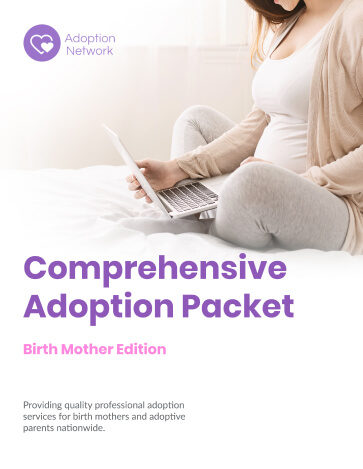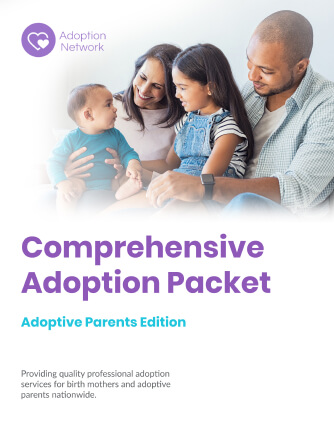
Creating a Village: How You Can Start an Adoption Support Group
Five years ago, I was struggling to find my footing as a new, adoptive mother. My husband and I had just adopted our first child, and I was desperate to find support beyond just the adoption books and blogs I had been reading. I craved face-to-face interaction with women who understood what it is like to constantly be asked, “Is she your real child?” and “How much does adoption cost?” and “Why didn’t you have your own kids?”
My search to find an existing support group didn’t yield what I had hoped. Some groups were specific to the country the child was adopted from. Some groups charged membership fees and were very formal. Other groups had infrequent meetings and seemed disorganized and uncommitted.
It hit me one day that instead of waiting for the perfect adoption group to land in my lap, I should start one. After all, I was a teacher and understood the basics of leading, organizing, and moderating. So I began to contact the few adoptive moms I knew, and our group began.
Fast forward to today. Our group of ten ladies has grown to one-hundred and forty! Our moms have adopted internationally, domestically, and through foster care. Many of the moms have adopted kids with special needs, sibling pairs or groups, and transracially. Our group is also blessed to include biological mothers, foster mothers, adoptive and foster mothers-to-be, and adoptees.
Starting an in-person support group can be quite simple, as long as you have commitment. Here are some tips to get you started:
- Contact all the adoptive parents (or just moms or dads, depending on your goal) you know and have your first meeting. Talk to your group about their needs, their level of commitment, how frequently they wish to meet, where and when they would like to meet, and what they hope to gain through a support group. Also, discuss who is the best fit for being the group facilitator, or would the group benefit from having two facilitators who can work together to manage the responsibilities. Should the group have a specific target audience such as transracial adoptive parents, parents who have adopted via foster care, or parents of kids with special needs? Have a member take careful notes during the meeting to submit to the potential leader at the end.
- Take some time to reflect on the meeting, utilizing the notes. Connect with anyone who expressed interest in leading or co-leading the group. Look for frequency in responses to questions such as when to meet and how formal the group should be.
- Determine the group’s membership guidelines: who can be in the group (based on gender, location, adoption status, etc.) and if the group will be open or closed (to new members).
- Establish a means of communication with group members: e-mail, Facebook, texting, etc. If you choose Facebook, you can create an open, closed, or secret group. It’s easiest to have one central way of communicating rather than spreading yourself too thin and maintaining multiple communication avenues. The advantage to creating a Facebook group is that support can be both in-person (at meetings) and online. Many of the moms in my group aren’t able to attend meetings, so having the Facebook group has become a valuable resource.
- Decide how often you will meet, where you will meet, and when you will meet. Keep in mind that if you wish to have an open group where new members can be added, it’s best to meet in a public place for the comfort and safety of all who participate. My group found that meeting once a month, on a Sunday late-afternoon, at a local café, was easiest for everyone. If you choose to meet in a public place, you might select a venue that offers private rooms to optimize the ability to share personal information without fear of someone who is not in the group overhearing or interfering. Options for private spaces might include a house of worship, a restaurant with a party room, or your local library or hotel’s conference room.
- Establish if kids, friends, partners, social workers, or other relatives are welcome at meetings or if meetings are for members-only. If you opt for no-children, like my group does, you might choose to have a few all-family events throughout the year.
- Consider the level of formality you wish to have in your group. Will there be duties or offices assigned? Will there be membership dues, and if yes, what will they be used for? Will you have guest speakers such as social workers and therapists?
- Set up group-guidelines and make them part of the Facebook page description or make them part of the signature in every e-mail sent. Modify these as your group evolves.
- If you wish to promote your group in your community, options include: notifying all your local adoption agencies and attorneys; carrying pass-along cards (business cards) to give to any adoptive families you meet; sharing your group’s information with local schools, businesses, and libraries; taking out an advertisement in your local newspaper, etc. Promotion might be an area that the group leader assigns to a member who is experienced in public relations.
As your group becomes established and grows, carefully consider what can be modified to make the group more productive. It may mean simplifying guidelines, adding membership dues, splitting the group into sub-groups, or electing to include partners in meetings.
Remember, there is power in numbers and raising children well truly does take a village. Having a group of like-minded individuals empowers you to be the best adoptive parent you can be.
Author: Rachel G.


×
Search Adoption Network
Speak with a Specialist 1-800-367-2367
